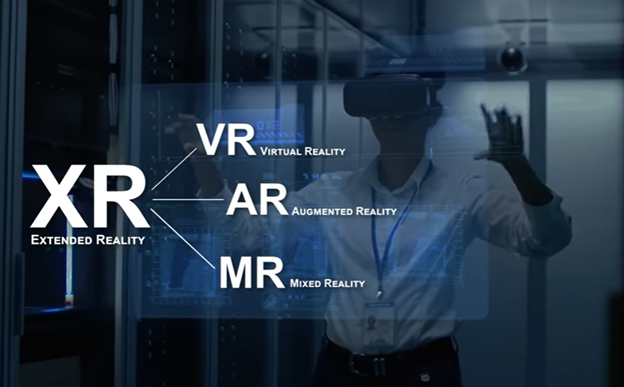Exploring the Boundless Horizons of Extended Reality
In a world where technology is evolving at a rapid pace, our reality is expanding beyond the confines of what we once thought possible. Extended Reality (XR) is at the forefront of this digital revolution, seamlessly blending the physical and virtual worlds to create immersive experiences that redefine how we interact with our environment. From virtual reality (VR) to augmented reality (AR) and mixed reality (MR), XR is reshaping industries and unlocking new realms of possibilities.
The Evolution of Extended Reality
Extended Reality encompasses a spectrum of technologies that alter our perception of reality. Virtual Reality (VR) immerses users in entirely digital environments, transporting them to simulated worlds where the only limit is imagination. Augmented Reality (AR), on the other hand, overlays digital elements onto the real world, enriching our surroundings with interactive digital content. Mixed Reality (MR) merges the virtual and physical worlds, enabling digital objects to interact with real-world environments in real-time.
The journey of Extended Reality began with primitive forms of VR in the 1960s, but it wasn’t until recent advancements in computing power, graphics, and motion tracking that XR truly began to flourish. Today, XR technologies are becoming increasingly accessible, thanks to the proliferation of smartphones, affordable headsets, and powerful computing devices.
Applications Across Industries
Extended Reality is transcending entertainment and making waves across various industries, revolutionizing how we work, learn, communicate, and play.
In healthcare, VR is revolutionizing medical training by providing immersive simulations for surgeons to practice complex procedures in a risk-free environment. AR is enhancing patient care by overlaying vital information onto medical scans, enabling doctors to make more informed decisions in real-time.
In education, XR is transforming classrooms into immersive learning environments, allowing students to explore historical events, dissect virtual organisms, or even travel through space without leaving their seats. AR apps are bringing textbooks to life, turning static images into interactive 3D models, and engaging students in a way that traditional methods cannot match.
In manufacturing, MR is streamlining design processes by allowing engineers to visualize and manipulate 3D models in real-world contexts. VR simulations are optimizing training programs for factory workers, reducing costs and improving safety by providing hands-on experience in hazardous environments.
In retail, AR is enhancing the shopping experience by enabling customers to visualize products in their homes before making a purchase. VR is revolutionizing e-commerce by creating virtual storefronts where users can browse and interact with products as if they were in a physical store.
Challenges and Future Prospects
While Extended Reality holds tremendous promise, it is not without its challenges. Technical limitations, such as latency and graphical fidelity, can hinder the immersive experience. Moreover, concerns about privacy, security, and ethical implications must be addressed as XR becomes more pervasive in our daily lives.
However, the future is bright, with ongoing research and development pushing the boundaries of what is possible. As XR technologies continue to evolve, we can expect to see even more groundbreaking applications in areas such as telepresence, remote collaboration, and entertainment.
In conclusion, Extended Reality is not just a glimpse into the future—it is a transformative force that is reshaping our reality in profound ways. Whether it’s revolutionizing industries, empowering individuals, or fostering creativity and innovation, XR has the power to unlock boundless possibilities and usher in a new era of human-computer interaction. As we continue to explore the vast horizons of Extended Reality, one thing is certain: the only limit is our imagination.
As Extended Reality continues to evolve, its integration with emerging technologies like artificial intelligence, blockchain, and the Internet of Things promises to open up even more exciting possibilities. AI-driven algorithms can enhance XR experiences by personalizing content and interactions based on user preferences and behavior.
Blockchain technology can ensure data integrity and security, fostering trust in XR applications such as virtual currency transactions or digital asset ownership. Additionally, the integration of XR with IoT devices can create immersive smart environments where physical and digital entities seamlessly interact, revolutionizing how we interact with our surroundings. With these advancements on the horizon, Extended Reality is poised to become an indispensable part of our lives, reshaping our reality in ways we have yet to imagine.

